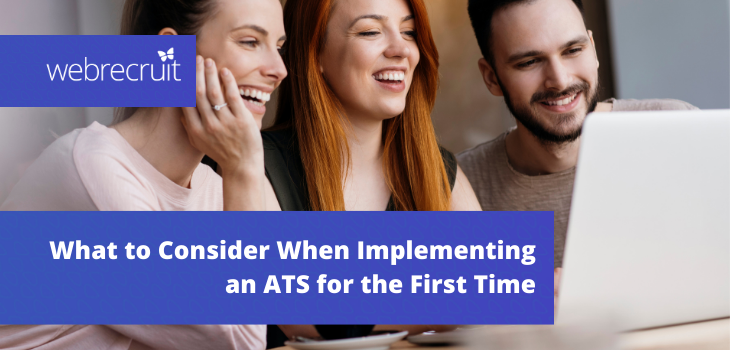The phrase ‘recruitment marketing’ has been used a lot in recent years, following the increased focus on employer branding activities.
But what is recruitment marketing exactly?
Recruitment marketing tactics adopt inbound marketing methodologies to help your organisation build employer brand awareness and attract potential candidates to apply for your roles. Even if you don’t have any active vacancies, these marketing tactics can be used to create a ‘buzz’ around your brand to make jobseekers want to work for you – you can then use tools, such as job alerts, to capture this interest.
Isn’t writing good job adverts enough?
Writing engaging, searchable job adverts is important in your talent attraction strategy and a great way of encouraging candidates to apply for jobs with your organisation. However, recruitment marketing starts even earlier in the process than your job advertising.
Traditional inbound marketing tactics follow the three stages of the ‘buyer’s journey’: Awareness, Consideration and Decision. This translates seamlessly into the world of talent attraction, however in recruitment marketing, your ‘buyer’ is the jobseeker.
The buyer’s journey:
Stage One: Awareness – Tactics to make jobseekers aware of your employer brand
Stage Two: Consideration – Tactics to encourage jobseekers to buy-in to your employer brand and consider you as a potential employer of choice
Stage Three: Decision – Tactics to convince your audience to apply for a job with your organisation
Where should I start?
When faced with developing a recruitment marketing strategy, it’s easy to feel overwhelmed as there are many routes you can go down.
Read More: 5 Ways to Recruit Like a Marketer
The best thing you can do is start slowly and build up your activities over time, once you have an idea of what’s working for your organisation (and what’s not). Here are some of our own recommendations to start attracting talent and converting jobseekers to candidates and (hopefully!) future employees:
1. Create a content strategy
To start building awareness of your employer brand, you need positive employment content to share. Don’t just stick to your job openings, think about employee testimonials, case studies, virtual office tours, company news articles, office celebrations and employee milestones.
We’d recommend sitting down with your Marketing team and planning what’s possible; could you create video content or engaging visuals as well as written content, for example?
Speak to your colleagues about what attracted them to work for your organisation and make a note of any common themes that you could craft content surrounding. There’s a good chance that these common themes could also help to attract future employees!
Creating content can be time consuming so start off slowly but remember to stick to a consistent schedule. This could be once a week, once a fortnight or even once a month; just remember to keep it consistent so your audience knows when to expect new content.
2. Get sharing and increase your reach
You’ve created some great content that you know will engage jobseekers; now you need to make sure that it’s seen!
Social media is an excellent tool for reaching a wide audience and if you don’t have the budget for sponsored content, you can promote it organically. If you have a sizeable following on your company social media accounts, this is a good way of getting your content seen for free.
You should also make the most of your existing employees and encourage them to share your content. Referrals are a powerful marketing tool and a great way of increasing your reach to their networks and beyond!
If you do have budget for paid adverts, carefully consider which platforms are right for your organisation, your content and the type of candidates you’re looking to attract. For example, visuals and creative content will translate well on platforms such as Instagram and Tiktok, whereas LinkedIn might be a better choice if you’re looking for candidates with very specific skill-sets due to its employment-focused targeting options.
3. Launch a careers site
Careers sites are a great tool, not only to display your organisation’s latest vacancies but to also house all the content you have created.
Your careers site will act as a destination that jobseekers can visit to build their interest in your organisation, its vision and your employees’ stories, taking them from stage two to stage three of the buyer’s journey.
Even if you don’t have any active vacancies listed on your careers site, you can still capture these engaged jobseekers by allowing them to submit a speculative application or register for job alerts with your organisation.
Before you start…
Before getting started on any recruitment marketing activities, make sure you are able to measure the success of them so you can make informed, data-driven decisions in the future when refining your strategy. We’d recommend using tracking URLs for social media promotions and application sources as a starting point.
Want to learn how Webrecruit can help with your recruitment marketing and advertising efforts? Request a brochure to find out more.






